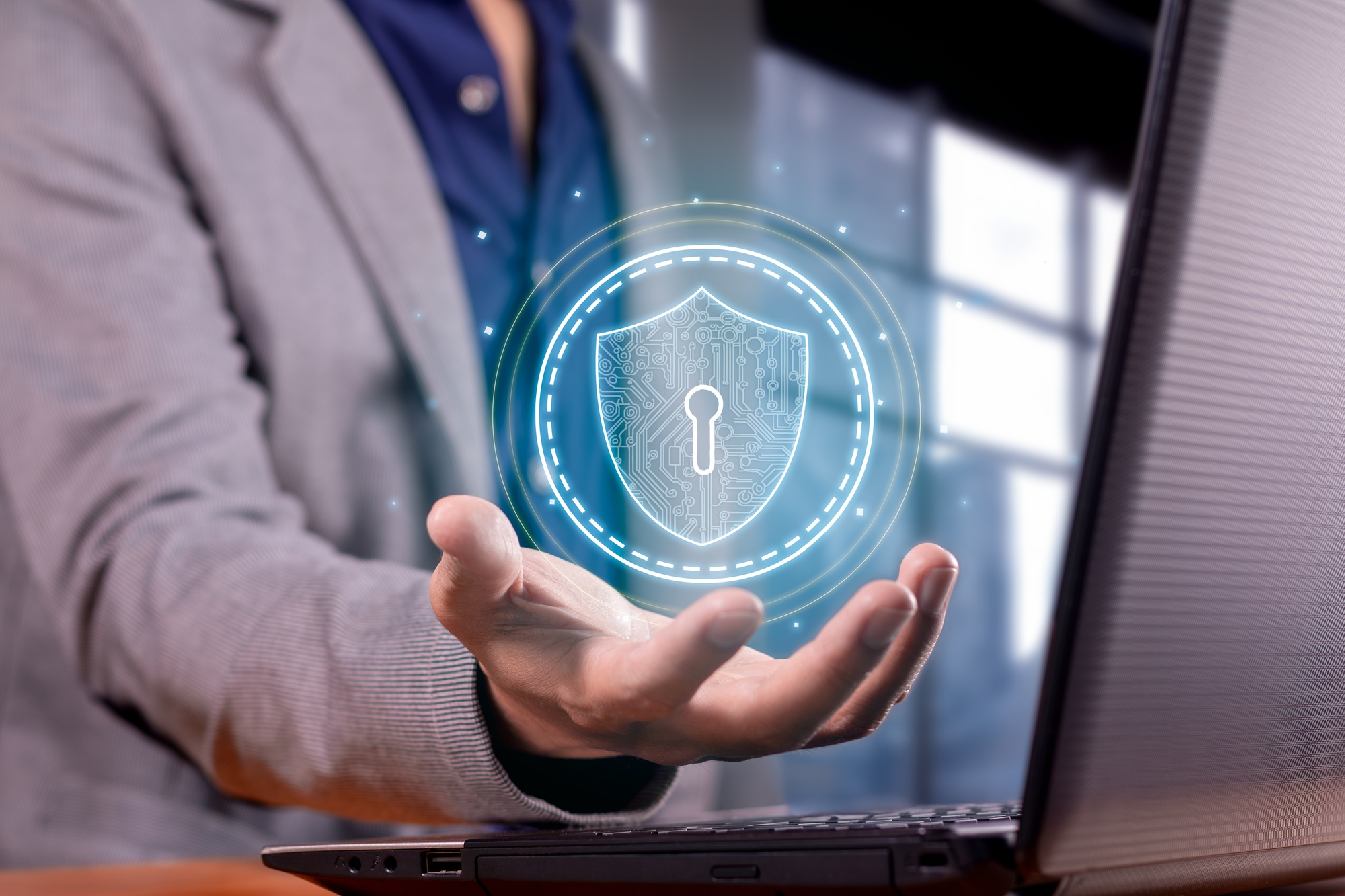Key Takeaways

- Understand Cyber Attack Types: Familiarize yourself with various cyber attack methods, including phishing, malware, DoS, MitM, and password attacks, to better protect your business.
- Implement Strong Password Management: Use unique, complex passwords for all accounts, and consider utilizing a password manager to enhance security and simplify management.
- Regularly Update Software: Keep all software and security tools up to date to protect against known vulnerabilities and improve overall functionality.
- Establish Robust Network Security: Utilize firewalls, intrusion detection systems, and secure Wi-Fi protocols to safeguard your network from unauthorized access and threats.
- Promote Employee Training: Train employees to recognize threats like phishing attempts and establish clear cybersecurity policies to create a culture of vigilance and preparedness.
- Prepare Incident Response Plans: Formulate an incident response team and communication strategy to swiftly manage and mitigate the effects of cyber attacks when they occur.
In today’s digital world, cyber attacks are more common than ever. With hackers constantly evolving their tactics, it’s crucial for you to stay one step ahead. Whether you’re a business owner or just someone who wants to protect personal information, understanding how to prevent these threats can save you from significant headaches and financial loss.
Implementing effective cybersecurity measures isn’t just about having the right software; it’s about creating a culture of awareness and vigilance. From strong passwords to regular software updates, every action you take plays a role in safeguarding your digital life. Let’s explore practical steps you can take to fortify your defenses and ensure your online presence remains secure.
Understanding Cyber Attacks

Cyber attacks present a significant threat to small businesses in today’s digital landscape. Understanding the different types of attacks and their common targets is essential for safeguarding your sensitive information.
Types of Cyber Attacks
- Phishing: Phishing attacks use deceptive emails or messages to trick you into providing personal information. These often appear to come from trusted sources.
- Malware: Malware consists of malicious software designed to damage or disrupt your systems. This includes viruses, ransomware, and spyware.
- Denial of Service (DoS): DoS attacks overwhelm your servers with traffic, causing them to crash and become inaccessible to users.
- Man-in-the-Middle (MitM): MitM attacks intercept communications between two parties, allowing attackers to steal data or inject malicious content.
- Password Attacks: Attackers use various methods, such as brute force or credential stuffing, to gain unauthorized access to your accounts.
Common Targets
- Sensitive Data: Attackers often target customer data, including financial information and personal details, which can lead to identity theft.
- Financial Accounts: Bank accounts and payment systems are prime targets for cybercriminals seeking financial gain.
- Intellectual Property: Small businesses with unique products or technologies may face risks if their intellectual property is targeted.
- Employee Information: Attackers may seek access to employee records to exploit personal details or initiate further attacks.
- Business Operations: Disruptions to your daily operations from cyber attacks can result in lost revenue and damaged reputation.
By understanding these aspects of cyber attacks, you can implement effective cybersecurity measures to protect your small business against potential threats.
Best Practices for Prevention

Implementing strong cybersecurity measures is crucial for small businesses to shield themselves from cyber attacks. Here are some best practices to enhance your security posture.
Strong Password Management
Manage passwords rigorously to protect sensitive information. Create unique passwords for each account, aiming for at least 12 characters that include a mix of uppercase letters, lowercase letters, numbers, and special symbols. Avoid using easily guessed information like birthdays or common words. Utilize a password manager to store and generate complex passwords. Regularly update passwords, especially for accounts that experience suspicious activity.
Regular Software Updates
Keep all software up to date to mitigate vulnerabilities. Set software applications, including anti-virus and firewall tools, to automatically update whenever possible. Install patches and updates within 24 hours of release to reduce the risk of exploitation. Regular updates not only fix security flaws but also improve functionality and overall performance of your systems, keeping your tech environment secure against the latest threats.
Network Security Measures

Network security measures are essential for your small business to protect against cyber attacks. Implementing robust strategies can safeguard sensitive information and ensure business continuity.
Firewalls and Intrusion Detection
Utilize firewalls to block unauthorized access to your network. Firewalls act as a barrier between your internal network and external threats, monitoring incoming and outgoing traffic to prevent attacks.
Employ intrusion detection systems (IDS) that monitor network traffic for suspicious activity. IDS provide real-time alerts about potential breaches, allowing you to respond quickly.
Secure Wi-Fi Networks
Ensure your Wi-Fi networks are secured with strong encryption methods, such as WPA3, to prevent unauthorized access. Change default SSIDs and passwords immediately, as these are common entry points for attackers.
Regularly update your router’s firmware to patch vulnerabilities and enhance security features. Limit access to your Wi-Fi network by using unique passwords for guests. Keeping your network secure helps protect against data breaches and maintains the integrity of your small business operations.
Employee Training and Awareness

Employee training and awareness play a critical role in safeguarding your small business from cyber attacks. The goal is to empower your employees with the knowledge and skills necessary to recognize threats and act appropriately.
Recognizing Phishing Attempts
Recognizing phishing attempts is essential for your employees to thwart cyber threats. Phishing is often disguised as legitimate communications, like emails or messages pretending to be from trusted sources. Train your team to identify common signs, such as unusual sender addresses, misspellings, and urgent requests for sensitive information. Regular drills and real-world testing can help reinforce these skills, ensuring your staff is prepared to respond to phishing attempts effectively.
Cybersecurity Policies
Establishing and enforcing robust cybersecurity policies forms the backbone of your small business’s defense strategy. Clear policies should outline acceptable use of technology, data protection measures, and procedures for reporting suspicious activities. Regular reviews and updates of these policies are vital to keep pace with evolving cyber threats. Encourage a culture of accountability where employees understand their role in maintaining security, fostering vigilance across the organization.
Incident Response Planning

Incident response planning is essential for small businesses to effectively manage and mitigate cyber attacks. By preparing in advance, you can minimize damage and ensure a swift recovery.
Creating an Incident Response Team
Creating an incident response team is crucial for any small business. This team consists of key personnel responsible for initiating and managing response activities during an attack. Include representatives from IT, human resources, legal, and public relations. Assign specific roles, such as incident commander, communication lead, and forensic analyst, ensuring everyone understands their responsibilities. This structure enables your business to respond quickly and effectively when facing a cyber threat.
Communication During an Attack
Communication during an attack requires clarity and promptness. Establish predefined communication channels for notifying internal stakeholders and external parties, such as clients and law enforcement. Use simple, direct language to inform staff about the situation and provide clear instructions. Regular updates maintain transparency and help build trust. Ensure your team knows how to report suspicious activity, which can contribute to early detection of attacks. Effective communication plays a vital role in managing the impact of cyber incidents on your small business’s reputation and operations.
Conclusion

Staying proactive in cybersecurity is essential for protecting your personal and business information. By implementing strong passwords and keeping software updated you can significantly reduce your risk of falling victim to cyber attacks.
Fostering a culture of awareness among employees is just as crucial. Regular training and clear policies can empower your team to recognize and respond to threats effectively.
Don’t overlook the importance of an incident response plan. Being prepared ensures you can act swiftly and minimize damage when an attack occurs. Your commitment to these practices can make a world of difference in maintaining a secure digital environment.
Frequently Asked Questions

What are the main types of cyber attacks discussed in the article?
The article highlights various cyber attacks, including phishing, malware, denial of service (DoS), man-in-the-middle (MitM), and password attacks. Each type poses significant threats, especially to small businesses, targeting sensitive customer data, financial accounts, and employee information.
Why is cybersecurity important for individuals and businesses?
Cybersecurity is crucial for protecting personal and sensitive information from cyber threats. Both individuals and businesses must implement effective measures to prevent data breaches and maintain trust with customers while ensuring business continuity.
What are some practical steps for improving cybersecurity?
To enhance cybersecurity, individuals and businesses should use strong, unique passwords for each account, perform regular software updates, and consider using a password manager to securely store passwords.
How does employee training contribute to cybersecurity?
Training employees to recognize cyber threats, especially phishing attempts, is vital for preventing breaches. Empowering staff with knowledge and policies fosters a culture of vigilance and accountability within the organization.
What role does incident response planning play in cybersecurity?
Incident response planning is essential for managing cyber attacks effectively. Establishing a team with clear roles and predefined communication channels ensures a swift, organized response, minimizing the impact on business reputation and operations.
How can small businesses protect their networks from cyber attacks?
Small businesses can protect their networks by utilizing firewalls, employing intrusion detection systems, securing Wi-Fi networks with strong encryption, and updating router firmware. Limiting access also helps maintain network integrity.
What is the importance of understanding cyber threats for businesses?
Understanding cyber threats allows businesses to implement effective cybersecurity measures tailored to their specific vulnerabilities, safeguarding sensitive information and enhancing overall digital security. Awareness is key to proactive protection.
Why should software updates be automated?
Automating software updates ensures that systems receive the latest security patches promptly. This practice helps minimize vulnerabilities, reducing the risk of cyber attacks and maintaining a secure digital environment.
Image Via Envato



